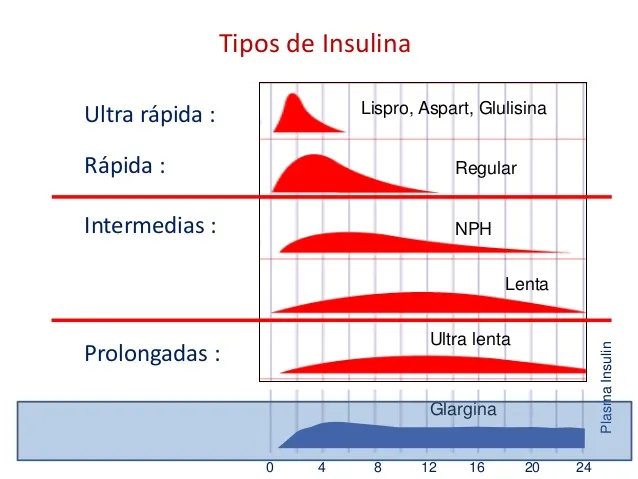Insulin is a hormone that is naturally secreted by the pancreas, helps blood glucose pass to cells by providing energy to the body.Without this substance, sugar is in very high quantities by the bloodstream causing tissue damage, condition that is known as diabetes.
Synthesizing insulin is one of the great inventions in the history of medicine.With this first substance obtained from animals and then obtained in the laboratory, it was the greatest advance in the treatment of diabetes.Formerly insulin was extracted from pig pancreas.Then with biomedical engineering the laboratory production of the so -called analog insulin began.
The first version of human insulin has its limitations, because when injected under the skin in high concentrations, it brings together, which causes slow absorption, is little predictable and the duration is variable with action dependent on the dose that is injected.
With the advances, it was possible to create what is called analogous insulins, a type of insulin that for its properties resembles the physiological function that the insulin generated by the organism itself would have.These analogous insulins are divided into two types: short action and prolonged action, the latter also known as basal.
Metabolic control
Now, to determine if these analog basal insulins are all the same, Dr. Ender Gómez, an endocrinologist and diabetes specialist, explained that one of the main objectives of every doctor constitutes obtaining the controls or goals in the treatment of diabetes.What do you mean by that?That there are parameters with which specialists consider that a patient is well controlled, from metabolic point of view, such as glucosylated hemoglobin index (HBA1C), fasting blood glucose and postprandial glycemia.
These parameters are extremely important when choosing an insulin treatment for a patient.As for this, Dr. Gómez said that “we must always take into account the effectivebetter quality of life to the patient ”.
similarities and differences
Gomez explained, through the example between the two basal insulins that are marketed in Venezuela (the Glargina and the Detemir), which are different in terms of pharmacokinetics, but in security, they meet the same objective.The difference is that it is detected, for example, it does not increase the weight in the patient, while the glargina does influence a gain."But in essence, they are equal insulins, in the sense that with them we can achieve the control objectives."
He added a specialist that numerous research and clinical studies have been developed that have concluded that analog insulins are not lower from each other.This means that they all work effectively and none is superior or better than the other, everything depends on the aforementioned parameters.
Insulin obstacles
Dr. Gómez pointed out that obesity is the main factor for changes in absorption and therefore in the action of insulin, “normally, while the patient is more obese, he has a greater degree of insulin resistance, therefore he needsalways more insulin to reach control parameters. ”
Another factor that also influences is the lifestyle of the person who has diabetes.For example, if you usually exercise, it has been shown that this activity mobilizes receptors that capture glucose, therefore, improve insulin effectiveness.Eating undone affects the effectiveness ofInsulins
There are many advantages that analog insulins have in the treatment of people with diabetes, maximize their effect leads to well -informed patients and who meet the changes indicated by their doctor in which it is included in having a lifestyle that avoids thesedentary and good eating habits.
Material approved by the Medical, Regulatory and Quality Department of Novo Nordisk Venezuela - Casa de Representa C.A.Urb. La Castellana, Av. Don Eugenio Mendoza, Latvia Business Center, Torre Ing Bank, 10th floor, office 106.


